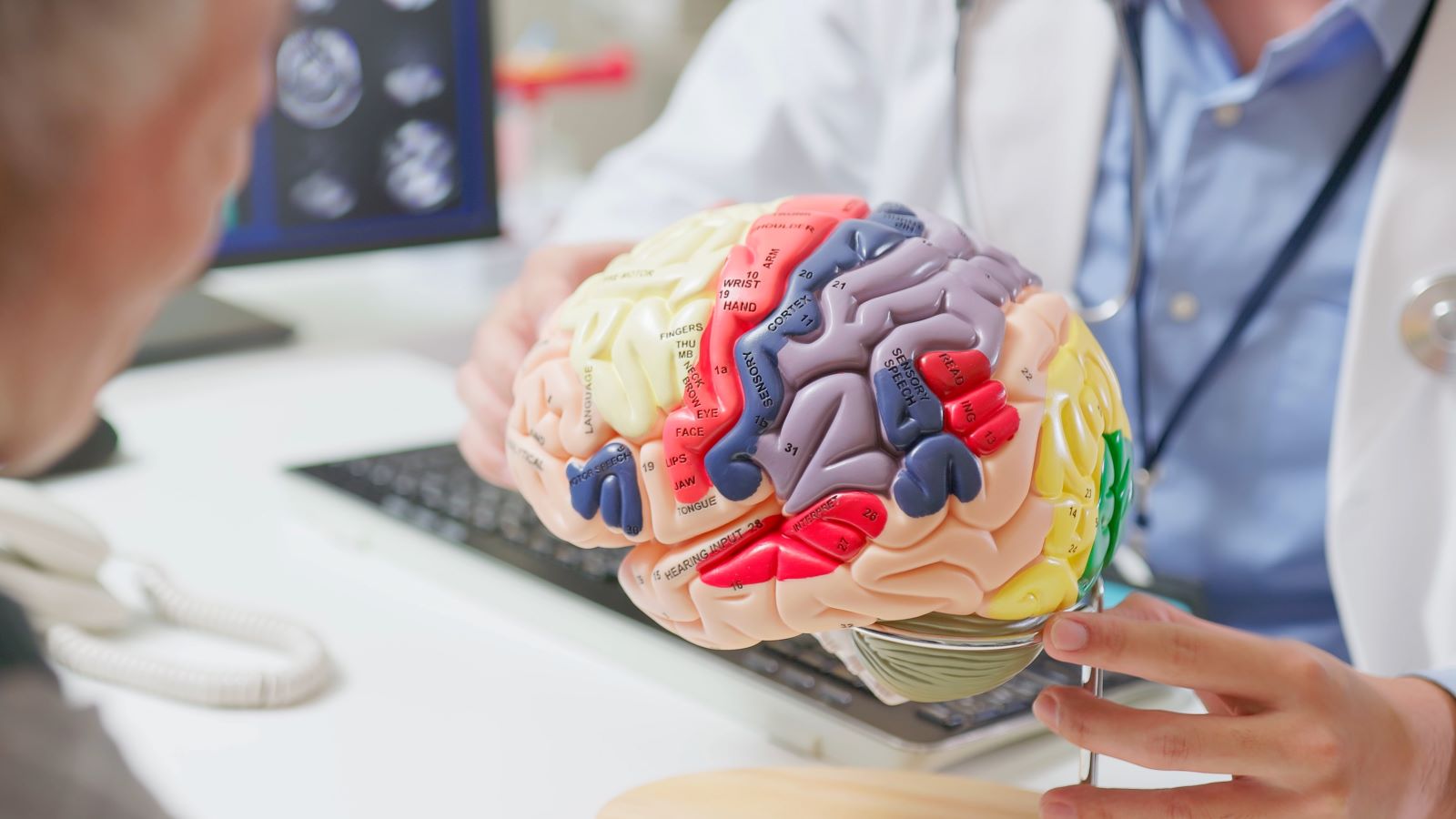<< Back
6 Red Flags That Could Signal a Brain Aneurysm

November 09, 2025
Some health problems creep up on you. Others strike without warning.
A brain aneurysm can do both.
“It can grow quietly with no symptoms at all – then suddenly rupture and become life-threatening,” says Daniel Cavalcanti, MD, PhD, a neurosurgeon at the Ayer Neuroscience Institute.
When that happens, every second matters. Here’s what to watch for — and what to do if it happens to you.
What is a brain aneurysm?
A cerebral (brain) aneurysm is a bulge or ballooning in the wall of a blood vessel. Most stay silent. But if one bursts, it can lead to stroke, permanent brain damage – or worse.
“The key is recognizing the signs of a rupture as soon as they happen,” says Dr. Cavalcanti. “It’s a critical emergency, but early treatment can save lives.”
6 warning signs of an aneurysm
1. Sudden, severe headache.
This is the most common warning sign – and one of the most alarming. It is usually associated with nausea and vomiting.
“If someone describes it as the worst headache of their life, we take that very seriously,” Dr. Cavalcanti says. “It’s one of the hallmark signs of a ruptured aneurysm.”
> Related: Headache or Migraine: What’s the Difference?
2. Blurred or double vision.
An aneurysm pressing on nerves near the eyes can affect vision, as well as increased pressure within the skull after an aneurysm rupture.
“You may notice trouble focusing or increased light sensitivity – both are worth urgent evaluation,” Dr. Cavalcanti says.
3. Neck stiffness.
This can be easy to dismiss – but don’t.
“Thunderclap headaches, associated to nausea and vomiting, in a patient with new onset of neck stiffness is very suggestive of an aneurysm rupture,” says Dr. Cavalcanti.
As blood spills within the cerebrospinal fluid compartments at the base of the brain, it becomes harder to move your neck.
4. Weakness or numbness.
If you suddenly feel weakness or tingling, especially on one side of the body, it could mean the aneurysm is pressing on critical brain structures.
“Even if it improves, don’t ignore it,” Dr. Cavalcanti warns. “See your doctor.”
5. Fainting or loss of consciousness.
When an aneurysm ruptures, blood pressure and intracranial pressure can spike suddenly, causing a person to pass out — sometimes without warning.
“Seizures are less common but can occur with rupture,” says Dr. Cavalcanti. “This is often when patients end up in the ER.”
6. Mental confusion.
Bleeding or swelling in the brain can lead to sudden changes in speech, thinking, or alertness. Someone might seem disoriented, slur their words, or have trouble finding the right words.
“These are often mistaken for ischemic stroke symptoms,” says Dr. Cavalcanti. “In either case, you’ll need immediate attention.”
> Related: 3 Surprising Signs of a Stroke You Should Know
Who’s most at risk?
Family history is an important risk factor – and it’s often overlooked.
“If you have two or more first-degree relatives (parent, sibling or child) with a brain aneurysm, screening with imaging may be recommended to check for an unruptured aneurysm before it ruptures,” Dr. Cavalcanti says.
High blood pressure, cigarette smoking and heavy alcohol abuse are common risk factors. Polycystic kidney disease also increases the risk of brain aneurysm development and should trigger screening for vascular imaging of the brain.
Even if you have risk factors, there are steps you can take to help prevent an aneurysm:
- Keep blood pressure controlled.
- Don’t smoke.
- Limit alcohol.
- Eat a heart-healthy, low-salt diet.
- Stay on top of stress.
> Related: 6 Ways to Lower Your Risk of a Brain Aneurysm
When to seek care.
A brain aneurysm don’t always come with warning signs. But when they do, every minute matters.
“If you notice these symptoms – especially if you have a strong family history – seek emergency care immediately,” says Dr. Cavalcanti. “The earlier we act, the better the outcome.”